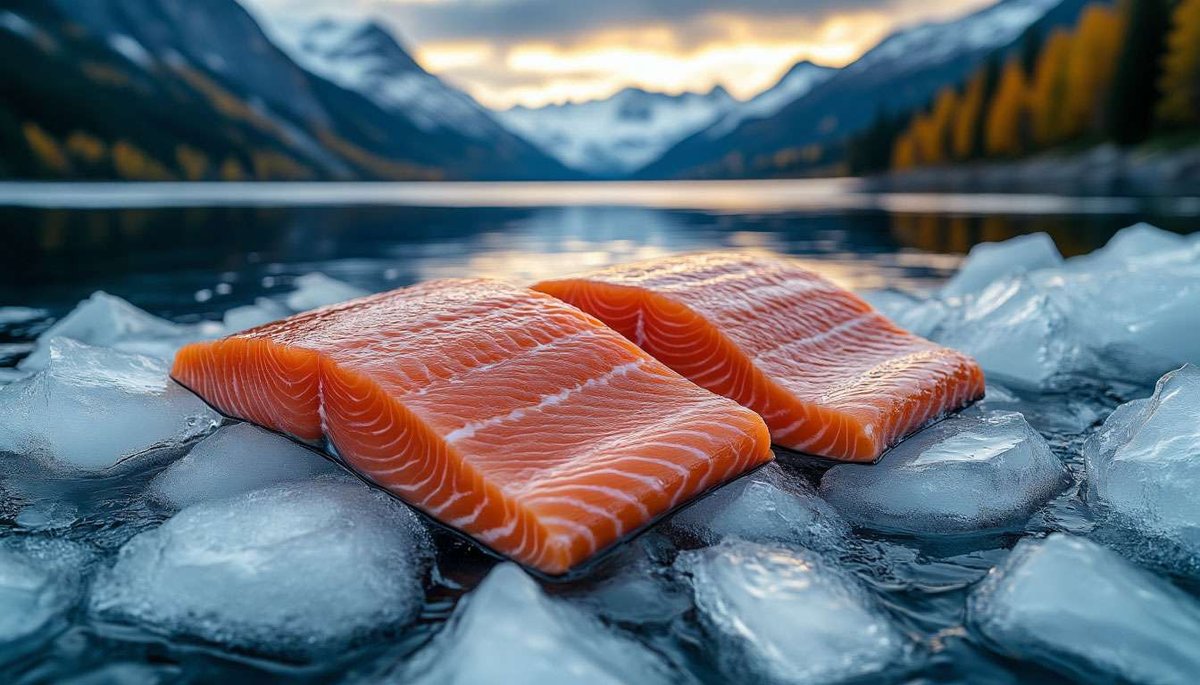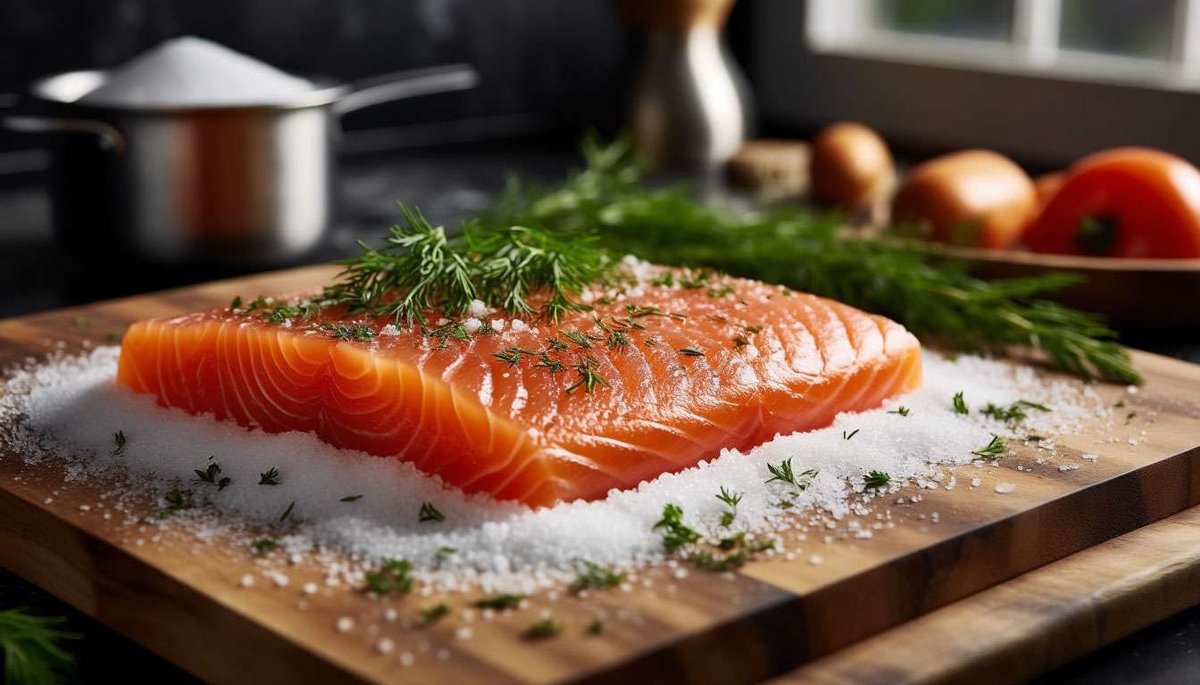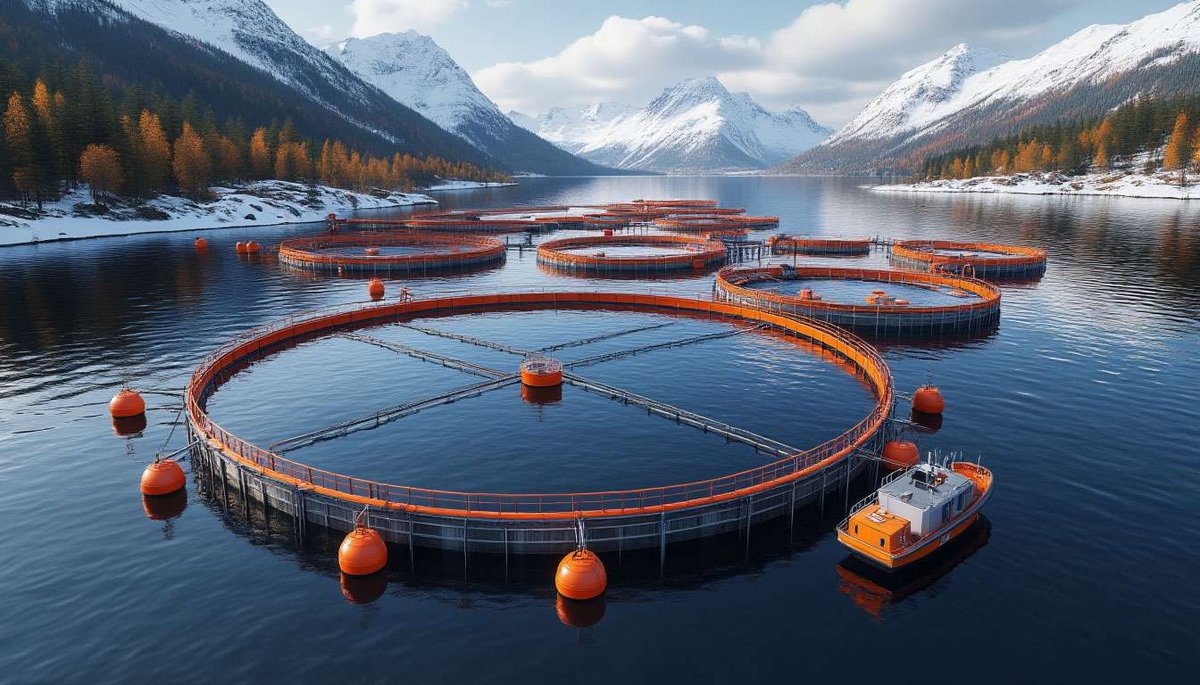The kingdom of salmon: where to find "Norwegian gold" and how to tell wild from farmed

Norwegian salmon is a global gastronomic brand: more than half of the Atlantic salmon exported worldwide is farmed in the cold waters of the northern fjords. But tourists need to know the nuances: wild salmon only enter the rivers for a few weeks a year, and most restaurants offer farmed salmon, which is nevertheless renowned for its high quality standards. To find out where to hunt for the perfect steak, what gravlax is good for, and why farms now resemble space stations, read the answers to key questions.
How does wild Atlantic salmon differ from farmed salmon?
Wild salmon are born in freshwater rivers and spend two to three years in the ocean, building muscle on natural feed; their meat is denser, brighter in colour, and the season is limited to June–August, when the fish return to spawn. Farmed salmon live in sea cages for 14-18 months, feeding on a balanced diet of algae oils, which gives them a milder taste and higher fat content, and allows them to be supplied all year round. Wild salmon is more expensive and is labelled as "villaks" or "wild Atlantic salmon". For most dishes, only gourmets will notice the difference, but it is particularly noticeable in sashimi or lightly salted varieties.
What is gravlax and how is it prepared in the Norwegian style?
Gravlax is salmon fillet cured with a mixture of coarse salt, sugar and chopped dill. The classic ratio is 3:2:1 (salt-sugar-dill), but chefs add aquavit, beetroot juice or juniper for a more complex flavour. The fish is tightly wrapped in plastic wrap, placed under a weight and left to marinate for 24–48 hours, periodically draining the brine. After rinsing and drying, the surface is covered with a thin shiny film, and the main flavours – sweetness, salt and a light dill freshness – are perfectly revealed in thin silky slices on Borodino bread with a mustard and honey sauce.

Where in Norway can you try the freshest salmon?
The best gastronomic experiences are found in regions where you can try fish "from the water to the plate". In Oslo, head to Fiskeriet or Lofoten Fiskerestaurant, where the morning catch is delivered by plane from the north. In Bergen, the Fisketorget market offers steaks, sashimi and smoked versions right by the water. In Lofoten and Tromsø, many restaurants have agreements with local farms: book a table at Emma's Drømmekjøkken and ask for a tasting set with three textures of salmon – raw, lightly smoked and confit. Wild salmon lovers can book a fishing trip on the Alta River, where licensed fishing is permitted with immediate grilling in a fisherman's hut.
How are modern salmon farms organised and why are they called 'smart'?
Modern aquaculture uses RAS (recirculating aquaculture systems), robotic tracking cameras and laser "shepherds" to keep lice away. Huge round pens up to 40 m deep are equipped with oxygen sensors, temperature buoys and automatic feeders that dispense pellets according to the fish's appetite, reducing waste. Each batch of fish has a digital passport – from roe to fillet packaging. The farms are audited by Global G.A.P. and ASC; thanks to early vaccination and selection, disease resistance has increased and antibiotic use has fallen to almost zero. A visit to the SalMar Ocean show farm is a chance to see the "salmon skyscraper" swaying among the waves.

What environmental challenges does the Norwegian salmon industry face?
The main problems are biotic parasites (salmon lice), escaped farmed fish and eutrophication of the fjords. The government has introduced a "traffic light system": in order for farmers to increase production, the parasite level in the area must be "green". Biological control is used: young gobies, which feed on lice, are released into the cages. Escapes are minimised by double nets and deep anchoring. Flow meters are used to control nutrients and stocking density is limited. At the same time, there is growing interest in land-based RAS farms, where effluent is filtered. In this way, Norway is striving to maintain its status as the "cleanest" supplier of salmon.
What traditional and modern salmon dishes are worth ordering?
Classic dishes include smoked salmon on rye bread with cream cheese; gravlax with dill; and fiskesuppe, a fish soup in which salmon is cooked with cod in a creamy wine broth. Contemporary chefs serve lightly smoked belly tataki with miso caramel sauce, nikkei ceviche with strawberries and elderberries, or sous-vide salmon with rapeseed oil and seaweed purée. For a street version, try the salmon burger at the Reine market with aquavit mayonnaise sauce and pickled cucumber.
Salmon is more than just a product: it is the calling card of the Norwegian coast, a source of national pride and a multi-billion-dollar industry that has become a laboratory for sustainable technology. Wild or farmed, lightly salted or smoked, with teriyaki sauce or in grandma's soup, Norwegian salmon always retains the cool freshness of the fjords and the mild sweetness of the northern summer. When planning your trip, leave a day for a farm tour, book a chef's table dinner and bring home some vacuum-packed gravlax: let a piece of the northern ocean settle in your kitchen and remind you of the clear waters where "Norwegian gold" is born.





2 comments
Log in to leave a comment